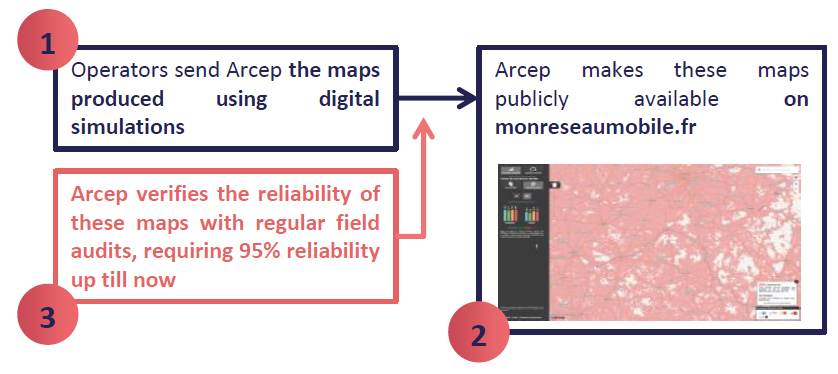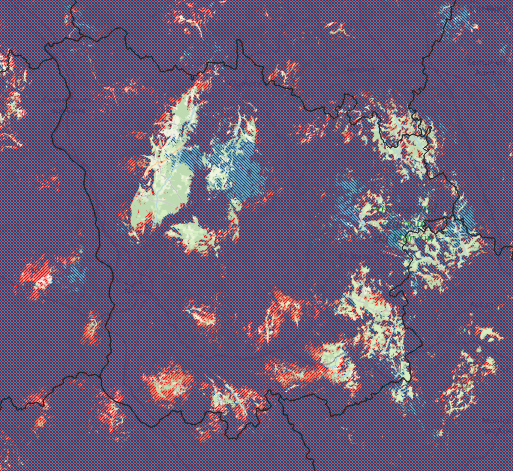Arcep publishes mobile operators’ 2G, 3G and 4G coverage maps on its Monreseaumobile website on a quarterly basis. Produced by operators, these theoretical maps are obtained through modelling that factors in the location of cell towers, their transmission power and the presence of any geographical factors. Arcep checks their accuracy on a regular basis through field audits. The maps’ reliability level corresponds to the success rate of the tests that Arcep performs in those areas that operators report as being covered.

Up until now, Arcep had considered a map to be reliable if it had an reliability level equal to or above 95%. Criticisms were made by consumer associations and local elected officials, pointing to disparities between the maps and their experienced reality in the field. It is vital that the maps be consistent with users’ actual experience, both to provide consumers with the correct information and to inform regional digital development decision-makers – particularly when choosing candidate locations for the targeted coverage scheme.
Arcep therefore increased this reliability threshold to 98%, through a decision adopted in March 2020 which came in effect in Q3 2020. Today, Arcep is publishing the first maps supplied by operators with this increased accuracy: operators have adapted the methods they use to produce their maps, to comply with this threshold, as a result of which coverage in some cases is below what was indicated in previous publications. Naturally, these decreases were also able to be offset by new deployments.
The following map illustrates the progression of 4G mobile coverage for an operator in the Nièvre between Q2 and Q3 2020. In blue are areas that are newly covered thanks to new deployments, and in red are those areas where 4G coverage has “shrunk” – presumably to comply with the obligation of 98% reliability.
A first field audit overseen by Arcep is currently underway in Metropolitan France, and the first provisional findings reveal that operators have made clear efforts, albeit without fully complying with this obligation of 98% accuracy. This audit will continue through to March 2021, and Arcep will have a dialogue with all of the operators based on the findings, so that they might make their coverage maps even more reliable.
Arcep’s data-driven regulation: keeping users informed to steer the market in the right direction
Arcep’s data-driven approach to regulation began with the creation of the “Mon réseau mobile” (My mobile network) website in 2017. This site makes the four main operators’ coverage maps available to the general public, detailing four tiers: from “very good coverage” to “no coverage”. The overarching aim is to satisfy the expectations of citizens, businesses and local authorities for whom mobile service availability is increasingly important. Mindful of users’ comments, the Authority is working to provide ever more accurate information, and for these still imperfect representations to align more closely with the reality in the field. To this end, Arcep released a regulator’s toolkit and a Code of conduct in 2018, to be able to include the findings of tests performed by other players, including crowdsourced applications, on the “Mon réseau mobile” site. Arcep continues to invite players involved in testing and measuring to share their findings, to improve the information that is available to everyone.

